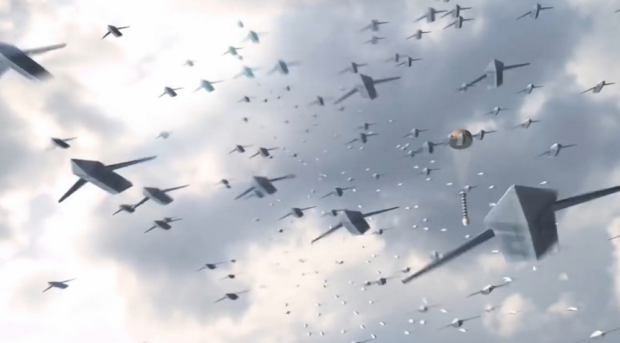A leading Chinese aerospace firm has filed a patent for a faster and more stable way to launch military drones that it says could help bring them into line with systems used by armed forces elsewhere.
Last week, Chinese aerospace firm AVIC Chengdu Aircraft Industrial Group filed a patent for a drone launch system that catapults drones into the air without emitting light, sound or exhaust, potentially overcoming the limitations of traditional bungee catapults and rocket boosters.
Bungee catapults are limited to launching lighter drones and suffer from significant deceleration across the launch rail while the sudden jerking motion can damage drones’ sensitive electronics. Rocket boosters, meanwhile, create significant amounts of noise, smoke, light and sound, which may reveal drone launch locations and expose troops to danger.
The new launch system, on the other hand, consists of a hollow cylinder separated into two chambers by a piston that can slide horizontally within the cylinder according to air pressure changes between the two chambers. The piston is connected to a pulley system and a thrust arm to an external shuttle that travels along a launch rail, on which the drone is mounted.
The system operates by injecting high-pressure air into the first chamber while a vacuum pump lowers the air pressure in the second chamber. This makes the piston move horizontally, pulling the shuttle from one end of the cylinder to the other to launch the drone.
“With the pulling of the thrust arm and the pulley system, the shuttle with the drone will move forward on the launch rack at a velocity several times quicker than the velocity of the piston,” AVIC’s patent reads.
The new launch system is also capable of launching drones in quick succession, taking only up to five seconds to return to launch position. However, the technology remains untested.
“Whether it’s useful, it remains to be seen,”
says Zhou Chenming, a researcher from the Yuan Wang military science and technology think tank. He also cautioned that the significance of the patent should not be overstated.
Source: Asia Times

